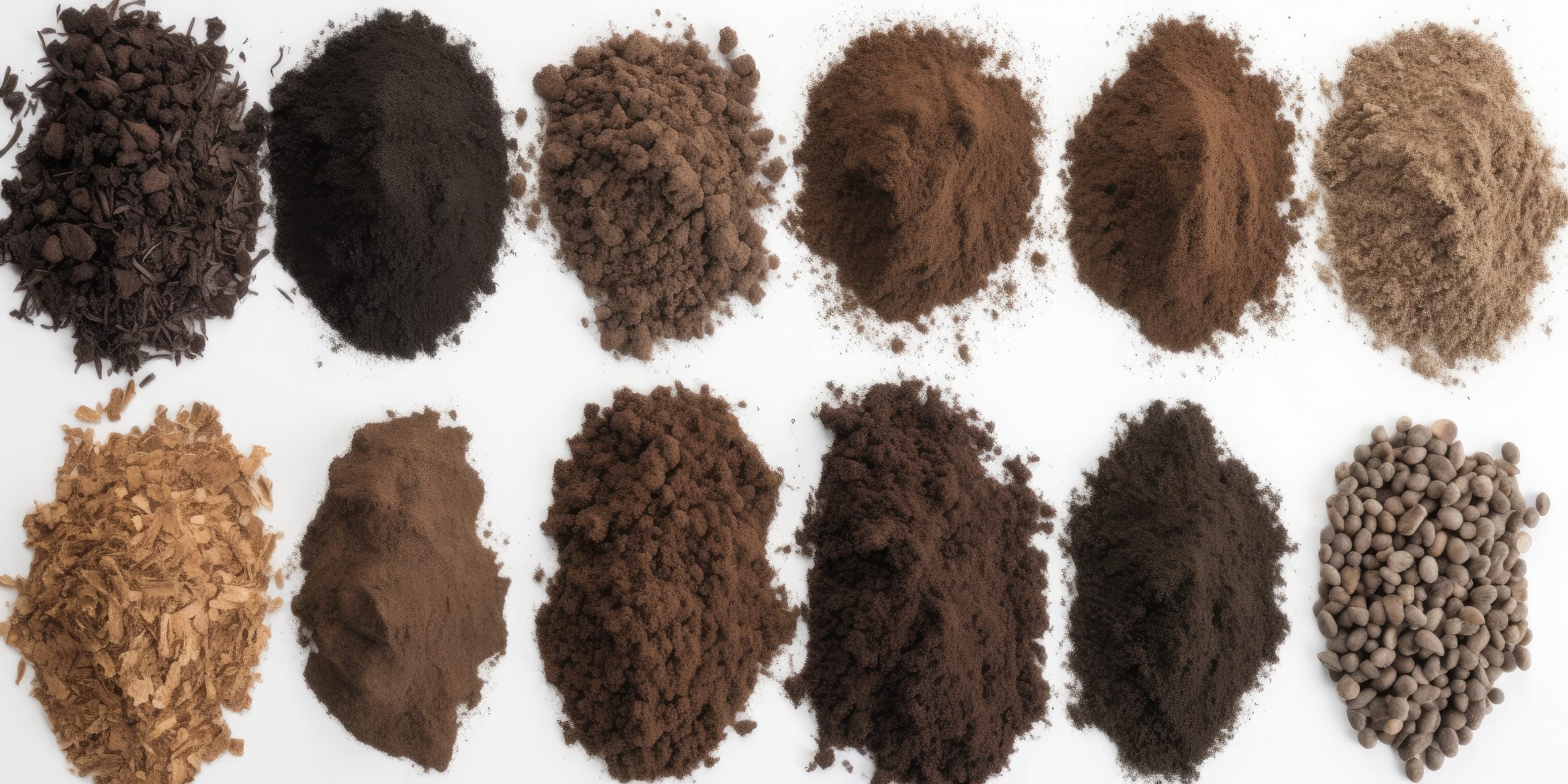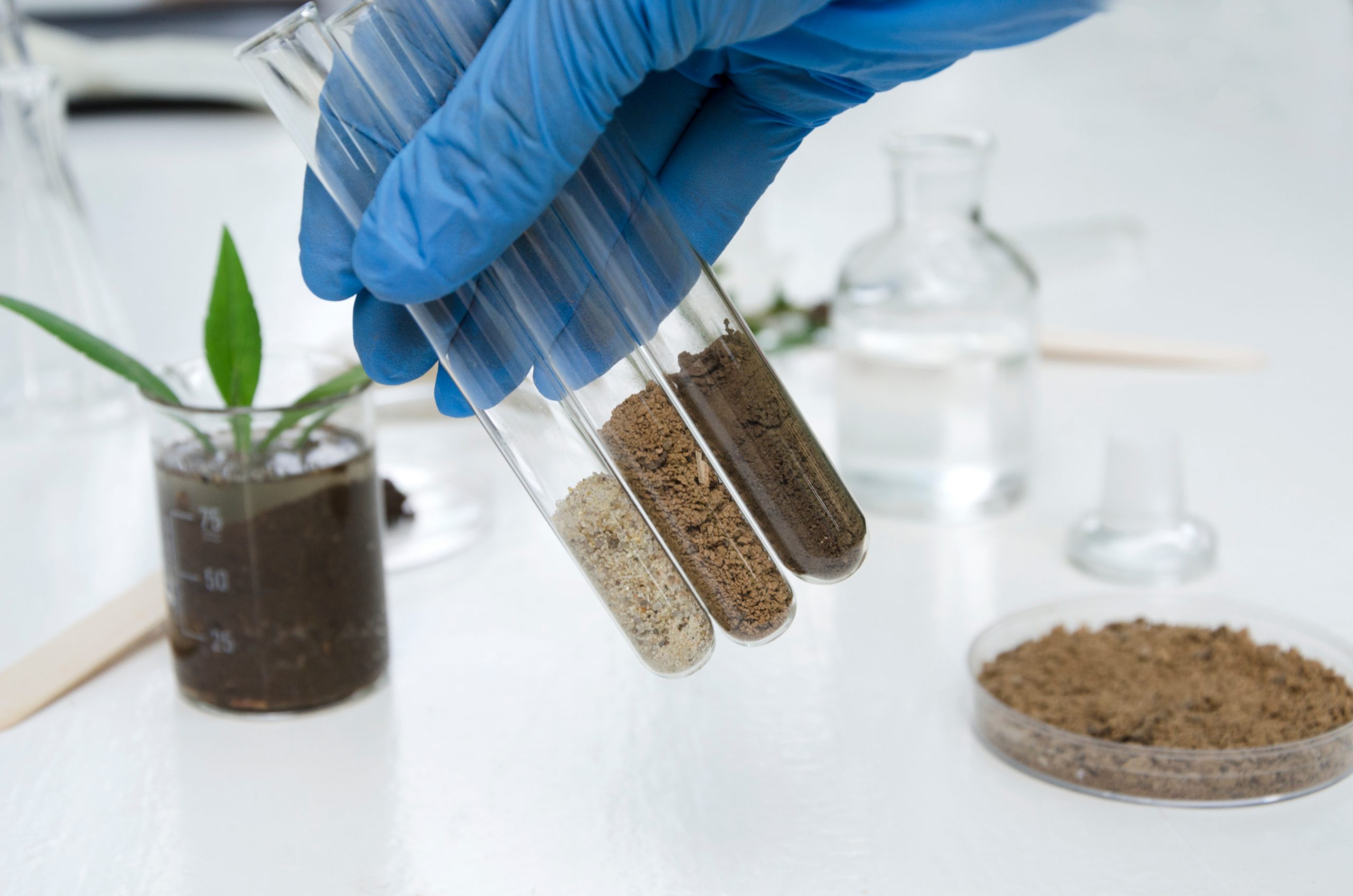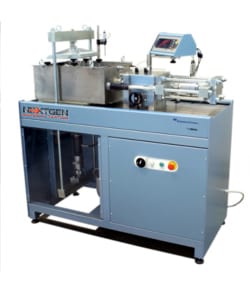In an ideal world, towering skyscrapers, expansive bridges, and critical infrastructure would stand the test of time and nature’s fury without fail. It may be possible. The basis of this vision is the principle of reliable soil testing, where precision meets durability to forecast and strengthen the unseen foundation beneath our feet. Not with the first brick laid, but miles below, within the earth’s hidden layers, begins the quest for structural safety against unpredictable forces of nature. This is the challenge: how can we predict and prepare for the earth’s capricious behavior to ensure the longevity and safety of our constructions? The answer is as profound as the question – through detailed soil shear strength testing.
Any structure’s design and stability depend on the shear strength of the soil. In other words, it is the soil ability to resist shearing stresses, which prevents catastrophic failures like landslides and foundation collapses. As a result of the soil internal friction, cohesion, and interlocking of its particles, this strength is a complex yet vital parameter to measure accurately.
In this blog, we discuss soil shear strength testing and its importance in geotechnical engineering. However, the main focus will be on our product, Shearmatic 300, an advanced tool for testing soil shear strength. We’ll cover its benefits and how it improves geotechnical analysis, providing detailed insights into its operational efficiency and impact on infrastructure safety.
Understanding Soil Shear Strength Testing
Firstly, we need to gain a full understanding of soil shear strength testing to realize its importance in construction and geotechnical engineering. Shear strength is the measure of soil’s ability to resist shear stress. This is a crucial factor for calculating bearing capacity, designing retaining walls, slopes, and embankments. This parameter directly influences the stability and integrity of structures built on or within the ground.
Geotechnical projects depend on soil shear strength, which impacts everything from foundation design to slope stability. Several factors influence soil shear strength, including soil type, particle size, shape, distribution, and orientation, as well as stresses acting on the soil. Friction also has a significant impact.

The direct shear test and triaxial compression test are the most common laboratory tests for soil shear strength. These tests enable construction practices to be safe and effective because they provide insights into soil behavior. A direct shear test, for instance, involves placing a soil specimen in a shear box or ring and applying a normal load until failure occurs. The test highlights the importance of sample preparation and execution, emphasizing the role porous stones and filter papers play in dissipating pore water pressure during testing.
Soil shear strength is also greatly affected by groundwater presence, particularly in saturated conditions where pore pressures affect soil particle friction. Under load, assumed free drainage allows for the dissipation of increased pore pressures in granular soils, minimizing water effects. Due to their microscopic voids and poorly interconnected voids, clay soils exhibit slow drainage, increasing pore water pressure. Clay-rich soils commonly found on construction sites require a deep understanding of their undrained shear strength.
Key Industries Rely on Soil Shear Strength Testing
While construction is the primary sector where soil shear strength testing matters most, it’s not the only industry dependent on these critical assessments. Here are some other industries that use soil shear strength testing:
Construction Industry
The importance of testing soil shear strength in construction cannot be overstated. A soil test is essential for determining the bearing capacity of the soil, which in turn influences foundation designs, slope stability assessments, and retaining wall construction. To guarantee safety and durability, shear strength assessments ensure that buildings, bridges, and infrastructure can withstand environmental stresses and loads. Adding geogrids to soil shear strength-based designs, such as wall and slope systems, increases the stability and integrity of structures significantly.
Geotechnical Engineering
The design and construction of tunnels, dams, and embankments rely heavily on soil shear strength. Bearing capacity is determined by the soil’s ability to resist deformation under shear stress, retaining walls are designed based on this property, and slope stability and landslides are analyzed based on this property. It is important to consider factors such as soil type, friction between soil particles, and groundwater presence when determining soil’s shear strength. These analyses rely on advanced testing methods, such as direct shear tests and triaxial compression tests. In geotechnical engineering, reinforcing materials and techniques are also used to increase the strength of soil, resulting in more stable and secure structures.

Aerospace and Defense
Testing soil shear strength is vital even in aerospace and defense sectors where facilities must endure extreme operational conditions. Testing is essential to verify runways, missile silos, and military installations can support heavy loads and withstand significant shear stresses. Bases and facilities are strategically planned based on the results, taking into account both immediate load requirements and potential long-term shifts in soil stability. In addition to dynamic shear analysis and deep foundation studies, advanced testing may be used to simulate the extreme conditions these structures will endure, such as blast impacts, heavy traffic, and environmental stresses.
Manufacturing and Industrial Facilities
In manufacturing and industrial settings, soil shear strength testing is used for the design and construction of foundations for heavy machinery, large structures, and storage tanks. During this testing, the ground is assessed for its ability to support the weight of the facilities and the dynamic loads induced by the operation of machinery without compromising its structural integrity. As manufacturing and industrial applications range from light assembly lines to heavy forging presses, soil testing must cover a broad range of situations. The assessment includes soil behavior under cyclic loads, settlement potential, and vibration tolerance, ensuring long-term durability and safety.
Transport Infrastructure
When soil shear strength is tested, roads, highways, and railways are safe and durable. In addition to assessing load support and environmental resilience, this testing helps assess the risk of soil erosion under pavements and embankments. In railway projects, soil testing is crucial to designing subgrade layers that are capable of accommodating dynamic loads from passing trains without deforming. It is necessary to understand soil shear strength in regions where freeze-thaw cycles occur to design roads resistant to cracking and buckling due to frost heave. Furthermore, testing soil shear strength informs the selection of tunnel boring machines and support systems in tunnel construction for subways and railways. This guarantees the excavation process’s safety and the tunnel’s long-term stability.

Environmental and Land Development
Environmental and land development projects require soil shear strength testing not just to ensure structural support, but also to contribute to environmental conservation and sustainable development. In these projects, soil testing assesses the potential for land erosion, which can negatively impact water quality and local ecosystems. Creating runoff management systems that minimize erosion potential can be achieved by understanding soil characteristics, such as selecting appropriate vegetation for landscaping that maximizes soil cohesion. Shear strength testing is important for recreational areas to ensure that foot traffic and activity levels can be safely accommodated without causing degrading conditions. To create enjoyable and resilient outdoor spaces, human use must be balanced with ecological preservation.
Agricultural Engineering
The final one on our list is agricultural engineering. Soil shear strength testing extends beyond irrigation and drainage systems. Soil conservation strategies and sustainable agriculture practices rely on it. Using soil shear strength, engineers can design tillage practices that avoid soil disturbance and preserve soil structure, reducing soil compaction and erosion, which are detrimental to crop productivity. Terracing and contour farming practices are also designed to prevent soil erosion and runoff in hilly areas, thus enhancing soil fertility and water retention. The ability of soil to bear loads is crucial for the efficient use of heavy agricultural machinery, preventing soil compaction that could impede root growth and water penetration. Thus, soil shear strength testing in agricultural engineering promotes sustainable farming practices that maintain or enhance soil health, thus ensuring long-term agricultural productivity and environmental sustainability.
Introducing the Shearmatic 300 – Large Shear Testing Machine

If we are talking about soil shear strength testing, we must introduce you to our special tool – The Shearmatic 300 stands at the forefront of soil shear strength testing technology, setting a new standard in the evaluation of geosynthetics, soils, and other large particle materials. Designed to accommodate samples up to 300 mm square, this automatic machine offers exceptional versatility and precision in testing materials with particles up to 20 mm in their largest dimension. With inserts for smaller sample sizes, its adaptability is further enhanced.
At the heart of the Shearmatic 300’s capabilities is the possibility of testing large samples, providing a more accurate representation of the strength of shear in different materials. This feature is particularly beneficial in construction applications, such as earth dams and embankment works. Stability and safety require an understanding of friction angles between materials.
Equipped with a 100 kN load cell and linear potentiometric transducers with 100 and 50 mm travel, complete with mounting brackets and a shear box, the Shearmatic 300 delivers precise measurements and reliable data critical to engineering decisions. With its sophisticated design and functionality, it is an indispensable tool for geotechnical testing, offering efficiency and accuracy at the same time.
Features of the Shearmatic 300 Shear Testing Machine

The Shearmatic 300 is engineered to set industry benchmarks in geotechnical testing, among others. The tool comes with a number of features specifically designed for the precise assessment of shear strength across various materials. Besides geosynthetics, this machine is capable of testing a wide range of materials, including shale, industrial slag, brick rubble, and colliery spoils, making it a versatile tool for geotechnical testing. With its ability to test large samples up to 300 mm square, it offers a more accurate indication of material shear strength, which is key to the accurate design and construction of earth dams, embankments, and other critical infrastructure.
Shearmatic 300 simulates real-world conditions with precision thanks to its powerful 100 kN load cell. The machine’s smooth variable speed control, ranging from 0 to 11.00000 mm/min, enables meticulous adjustment to meet test requirements. Hydraulic application of pre-set consolidation steps enhances efficiency, automating the transition from consolidation to failure phases and minimizing operator involvement.
The Shearmatic 300 is distinguished by its direct connection between the shear box, drive unit, and load cell, ensuring horizontal force transmission along the shearing plane. It eliminates the traditional “swan neck” setup, enabling more accurate force application and test results. Operators will find test parameter setup straightforward, thanks to the machine’s large digital graphic display. As a result of this, the test conditions can be easily managed through an intuitive interface.
Shearmatic 300 also offers advanced data recording capabilities, allowing separate and detailed documentation of both consolidation and failure stages. Data can be downloaded via the RS 232 serial port, which supports various protocols for comprehensive data analysis. As a result of these features, the Shearmatic 300 emerges as an indispensable tool in geotechnical engineering.
Technical Specifications of the Shear Testing Machine – Shearmatic 300
To get a better understanding of the capabilities of our product, it is also necessary for us to discuss the technical specifications of our product. Below you will find the specifications for our product:
-
Sample Size: This machine can accommodate samples up to 300 mm, with the option of testing smaller samples down to 150 mm using the NG-WF2304/1 150 mm sample insert, enhancing its versatility.
-
Shear and Vertical Force: Offers 100 kN force capacity.
-
Speed Range: Allows precise adjustments to match the specific requirements of each test, with a speed range of 0 to 11.00000 mm/min.
-
Maximum Travel: 75 mm maximum travel distance, allowing for thorough shear strength analysis.
-
Steps of Consolidation: Up to 50 pre-set consolidation steps are supported, allowing for detailed and customized testing.
-
Data Acquisition: With an RS232 serial port, the Shearmatic 300 facilitates easy data transfer for use with Direct and residual Geo-Analysis templates, streamlining test result analysis.
-
Power: A 2000W robust power supply guarantees consistent performance even under demanding testing conditions.
-
Overall Dimensions: Approximately 57.9 x 29.9 x 61.8 inches / 147 x 76 x 157 cm, making it a substantial yet manageable addition to any laboratory.
-
Approximate Weight: Approximately 1764 lbs / 800 kg.
Standardization of the Shearmatic 300 – Large Shear Testing Machine

We conclude our discussion of the Shearmatic 300 by looking at the vital role standards play in today’s material testing world. Geotechnical standards go far beyond guidelines to ensure accuracy, reliability, and comparability across tests. In addition to its cutting-edge design, the Shearmatic 300 is compliant with several key standards, making it an indispensable tool for professionals.
ASTM D3080
ASTM D3080 specifies the method for conducting direct shear tests on soils under consolidated drained conditions. Geotechnical engineering projects require the determination of the consolidated drained shear strength of soil materials. The Shearmatic 300’s capabilities align perfectly with this standard. Bearing capacities are calculated using this standard, foundations are designed, pavements are designed, and slopes and embankments are analyzed for stability. Following ASTM D3080, the Shearmatic 300 enables users to perform comprehensive and reliable soil strength analyses for structure design and analysis (Applied Testing & Geosciences, LLC, Geocomp).
ASTM D6243
ASTM D6243 is essential for determining the shear strength of geosynthetic clay liners (GCLs) and their interfaces with other materials. A methodology for determining shear resistance under specific test conditions is provided to generate design values. The standard applies to both performance and acceptance testing of GCLs, though caution is advised because shear resistance depends on many factors, such as material characteristics and test conditions. GCL applications in environmental and geotechnical engineering can be guided by ASTM D6243 results.
BS 1377:7
It outlines methods for measuring soil shear strength parameters under various stresses under BS 1377-7 for civil engineering. Construction professionals, civil engineers, and geotechnical professionals need this standard to manage soil and make foundation decisions. It encompasses procedures like laboratory vane tests, shear box procedures, and compression tests, including triaxial compression tests, to assess soil’s cohesion and resistance to sliding. Construction and ground engineering rely on BS 1377-7 for project efficiency and foundation integrity.
EN ISO 12957
A key component of geotechnical and civil engineering projects is the evaluation of frictional interactions between geosynthetics and soils. EN ISO 12957 provides guidelines for this assessment. Geosynthetics’ performance under stress can be accurately determined by this standard through its methodical approach in direct shear tests. EN ISO 12957 guarantees the reliability and stability of structures incorporating geosynthetic materials by standardizing how these interactions are measured. This data enhances the safety and durability of engineering solutions under diverse environmental conditions by providing essential data for the design of foundations, retaining walls, and other critical infrastructure components.
ASTM D5321
We are discussing ASTM D5321 as the last standard for determining the strength of shear between soil-geosynthetic interfaces and between different geosynthetics. Designed to provide performance test data under specified conditions, this method aids in the design and acceptance testing of geosynthetic products. Several mechanisms may contribute to total shear resistance, such as sliding, rolling, and material interlocking. ASTM D5321’s outcomes are particularly useful for designing geosynthetic applications such as landfill liners, heap leach pads, and hydraulic barriers. For geosynthetic design and application, this standard emphasizes the importance of testing conditions that mimic real-world applications.
Achieving Excellence in Geosynthetics Testing with NextGen’s Tools
Briefly stated soil shear strength testing is vital to maintain the structural integrity and longevity of construction and engineering projects. Building foundations, building bridges, and critical infrastructure are all reliant on understanding and accurately measuring soil shear strength. Shearmatic 300, an advanced testing system, is invaluable in this situation.
The Shearmatic 300 is at the forefront of geotechnical testing innovation, designed to meet today’s sophisticated demands. Due to its compatibility with a wide range of standards, it provides versatility across diverse testing scenarios. Designed to accommodate large samples, it allows a thorough assessment of materials’ shear strength. Combined with advanced capabilities such as variable speed control and automated management, this feature streamlines the testing process, offering accurate, representative results.
Furthermore, the Shearmatic 300’s user-friendly interface and robust data acquisition system contribute to its efficiency and reliability. In geotechnical engineering, these features facilitate smooth operation and analysis. In soil and geosynthetic testing, the Shearmatic 300 adds a significant amount of accuracy and depth by combining flexibility and control.
NextGen Material Testing Inc. is ready to assist you in adhering to these vital standards. For comprehensive soil shear strength assessments, our equipment, including the Shearmatic 300, is the best choice. We offer guidance and customized solutions specific to your unique testing needs. Our team is available to assist you in achieving excellence in material testing, whether you need detailed information or a quote. Our commitment to providing top-notch equipment and unparalleled expertise ensures that your testing processes not only meet but exceed industry standards, laying the groundwork for your safety and success.